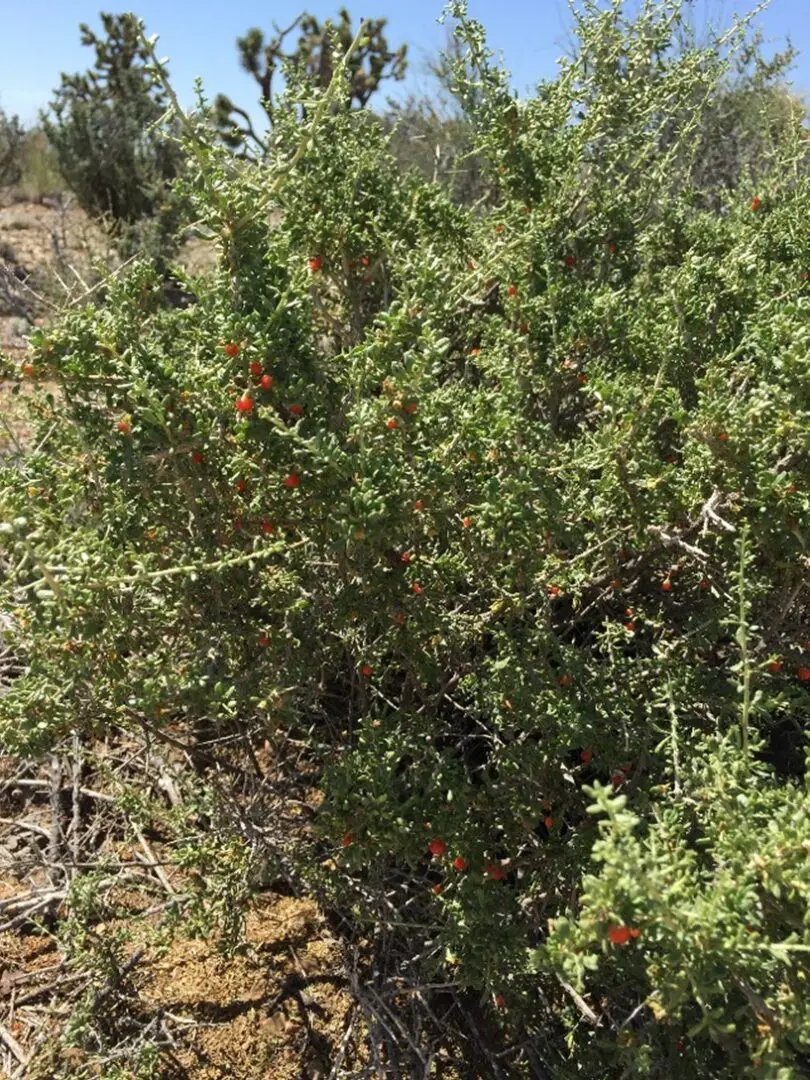The Anderson Wolfberry

WHAT WETLANDS PARK SHRUB IS RELATED TO A TOMATO PLANT?
Anderson Wolfberry (Lycium andersonii), also called water-jacket, redberry desert thorn, Anderson boxthorn, squawberry, Anderson’s desert thorn, Anderson thornbush, and Anderson lycium, is a shrub in the nightshade family (Solanaceae). This interesting family also contains common cultivated plants like tomatoes, tobacco, chili peppers, and potatoes, and deadly and toxic plants like belladonna, mandrake, datura, and henbane.
Wolfberry grows four to ten feet tall from a large root system that may extend more than 30 feet from the base of the shrub. The erect, stiffly spreading branches are tipped with spines, and the flat leaves are fleshy and look succulent, though the plant may shed them when conditions are dry.
In spring from March to May, small tube-shaped lavender flowers and bright red, round berries with many seeds appear. The bloom and the berry crop depend on the amount of winter rain, so good crops do not come every year, but when they do, Wolfberry bushes can look a little bit like rush hour on the freeway-with good reason!
Wolfberry is pollinated by bees, so they are expected (and regular) visitors. Butterflies and hummingbirds join them for sips of nectar from the flowers. Mockingbirds feed the juicy berries to their nestlings. Desert Woodrats collect the berries and store them for winter in their nests. Ground squirrels risk being seen by predators to climb among the branches for a share of the berries. Kangaroo rats and even coyotes snack on them. Quail eat the succulent leaves to supply part of the moisture they need in areas where water sources are scarce. Many birds and small mammals seek shelter, shade, and protection from predators beneath the densely packed, spiny branches.
Native Americans in Southern Nevada made Wolfberry fruits into foods and beverages. The berries were eaten fresh or beaten to extract the juice and pulp to make a nutritious drink. In good years, an abundant crop could be mashed and dried, then stored for several years until needed. In bad years, woodrat nests were raided for dried slabs of the stored berries.
If you can, find time to walk in the Nature Preserve this spring and enjoy the great weather. Check for flowers and berries on the Anderson Wolfberry bushes growing on the island at Vern’s Pond, and near the North Pond bird blind. If you keep your camera handy you may get a chance to photograph quail sheltering in the shade, butterflies sipping nectar from flowers, bees collecting pollen, or even a round-tailed ground squirrel clambering among the branches for a taste of juicy red berries.
By Chris Leavitt, President; photo by Chris Leavitt
Please enjoy this YouTube video!
Anderson’s Wolfberry
